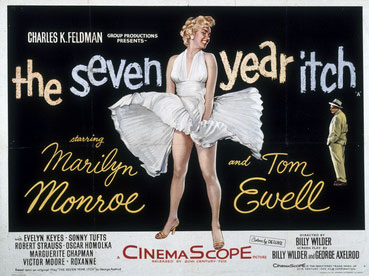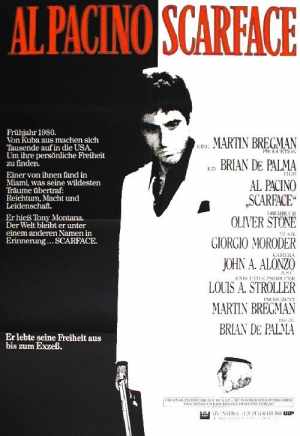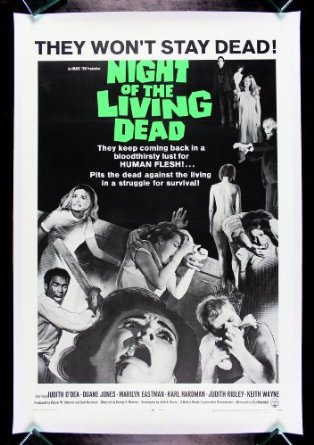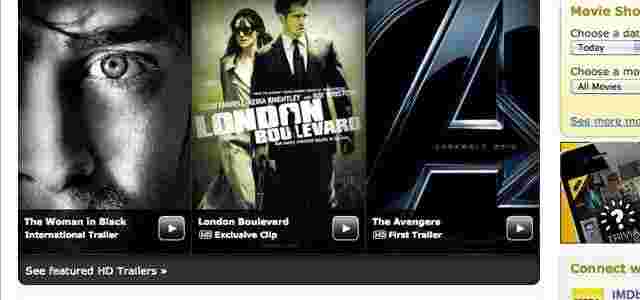The History of Film Posters
Film posters are a powerful visual element which promotes a film’s themes and narrative. Film posters over a long period of time were a significant part of the film industry, vital for advertising purposes. Before digital media, film posters were important in circulating a film star’s persona and embodying a film’s cult status. The use of Charlie Chaplin and Marilyn Monroe, major film stars in their day, are prime examples of how film posters reflects star power. Cult films like Scarface and Night of the Living Dead with their dedicated followings seek out film posters as a way of owning part of their passion. However, film posters seem to have become obsolete in today’s digital world.
Print Media and the beginning of Cinema

From cinema’s inception to television’s emergence in the 1950s, print media was the dominant form of mass media. Print media’s vast circulation had the ability to engage the public with advertising content. Gordon Gorey, an advertising expert, stated this period was a transition from ‘sound-oriented beings to primarily visually-oriented’ society 1. Gorey’s statement reflects that film posters were a sufficient form of advertising, as seen in the ‘Biograph Girls’ popularity. The ‘Biograph Girls’ were Florence Lawrence and Mary Pickford, whose films were a must-see for audiences. Film studios originally refused to give advertising credit to actors/actresses, so that film studios would not need to pay extra wages. Yet, Biograph Studios began to understand that exploiting their actresses’ popularity through advertising meant securing extra profits.
Sarah Projansky analysed that Lawrence and Pickford’s advertising appeal was due to ‘the concept of the girl was a marketing tool in the early star system’ 2. Projansky linking the ‘Biograph Girls’ popularity transcending into successful advertising explains how print media became important for the film industry. The constant use of ‘Biograph Girls’ circulating through print media became part of establishing a movie star system, where the film industry manufactured movie stars to match their on-screen personalities. Biograph Studios’ commercial actions also gives substance to Gorey’s analysis of this time period, showing how the film industry were taking advantage of mass media by targeting their audience in specific ways.
Publicity for Film Stars

As cinema progressed into a vastly defined medium, it meant film posters were essential in reflecting a film star’s personality. Charlie Chaplin’s “The Tramp” character in its day was widely beloved. Modern Times was Chaplin’s first cinematic release after a five-year interval. This had been due to a creative turbulence in Chaplin’s career, causing media debate. This made Modern Times highly anticipated, so it was important for Modern Times’ film posters to engage with this aspect. The image of “The Tramp” character in a characteristic mannerism, along with Chaplin in capital letters, was likely to engage film goers’ minds. This refers back to Gorey’s viewpoint regarding society becoming more visual-orientated, as use of “The Tramp” iconography can be seen as essential in attracting Chaplin’s audience. Critical reviews of Modern Times reflects the success of the film’s advertising, with New York Times critic Frank Nugent saying “time has not changed this genius” 3. This supports how “The Tramp” iconography is prevalent in the film poster and narrative.

Marilyn Monroe, both in her film career and public life, was constantly personified through her sultry persona. The Seven Year Itch made use of Monroe’s sexuality in an iconic scene over a subway grate, shown in its film poster. The film poster presents the audience with this sensual image, coinciding with the film’s title. This could be interpreted as a attention-grabbing ploy to make audiences immediately take notice. A publicity shoot for The Seven Year Itch, where two thousand people saw Monroe enact this pose, continued to show 20th Century Fox’s control of Monroe’s iconography. The Seven Year Itch’s box office profit of $10.2 million 4 and references to Monroe’s radiance 5shows film advertising’s success in constructing film stars’ iconography.
Film Posters in relation to Cult Status

Cult films are defined as containing a dedicated fanbase, which has developed a subculture engaging repeated viewings, quoting dialogue, and other forms of audience participation. Scarface is such a film, which has become legendary in popular culture for its frequently quoted dialogue and scenes of violent excess. Scarface related merchandise has become collectible for avid fans, including film posters due to its recognition as a landmark in the gangster genre 6. The above image symbolises Scarface’s cult following. One interpretation of the black and white background can be a metaphorical battle between good and evil. Scarface fans could possibly see the good versus evil symbolism as Montana’s internal struggle, therefore the film poster reflects his personality. Montana’s personality is part of Scarface‘s cult image, explaining why the film poster could have a sense of glamour for Scarface fans.

Night of The Living Dead is a cult film within the zombie genre, establishing modern zombie iconography due to its realism 7. Night of The Living Dead‘s film posters use iconography by containing a montage of imagery, such as depictions of zombie cannibalism, their realist movements and the victims’ terror. The use of language, particularly ‘the dead against the living in a struggle for survival’ could resonate with horror fans as it is a common depiction of the zombie genre. This use of iconography, now embedded within the zombie genre, reflects in part why Night of The Living Dead has become a cult film that attracts dedicated fans.
The Decline in Film Posters

In today’s internet age, digital media has overtaken print media. Both have similarities in their aim to increase sales of their products. Yet, digital media has greater capability to attract audiences. Digital media is able to be present on social media, websites and emails, which are used globally on a mass scale. In the United States alone, digital advertising makes a contribution towards $2.7 billion digital revenue profits and internet usage globally surpasses almost three billion people. It is also acknowledged that fifty percent of internet usage is searching for something 8. These statistics make it clear why film studios have moved their focus to digital markets, as they can reach an audience far exceeding any film poster. Film-oriented websites like IMDb (owned by Amazon and has over sixty million users) and Empire (mass-circulated, commercial film magazine) contain advertisements which link to a film’s trailer and/or promotional website. Either one contains a wealth of information that can never be placed in a film poster, such as scenes from a specific film or includes additional information i.e. local cinema listings. These are advantages which have consolidated digital marketing above print media.
Film posters in the past have been powerful visual elements in promoting its subject’s themes and narrative. Analysing film posters in relation to major movies stars and cult films, they had the ability to express the subject’s characteristics. The film posters containing Chaplin and Monroe reflected their iconography that was recognisable to audiences. This also applies to film posters for cult films, they contain familiar attributes which fans enjoy. Despite this, film posters in an industry increasingly dominated by digital marketing are becoming obsolete. Digital marketing has the ability to contain more information regarding films than a film poster ever could.
Works Cited
- Gordon Gorey. The Public Relations Journal – Volume 34 – Page 78. 1978 ↩
- Sarah Projansky. Spectacular Girls: Media Fascination and Celebrity Culture. New York University Press. 2014 ↩
- Frank Nugent. (February 6, 1936). “Movie Review – Modern Times”. The New York Times. ↩
- The Seven Year Itch > Details > Box Office”. Internet Movie Database. IMDb. imdb.com. ↩
- Lisa Owings. Marilyn Monroe: Hollywood Icon. ABDO Publishing Company. 2012 ↩
- Author Unknown: http://www.afi.com/10top10/gangster.html ↩
- Pauline Kael. 5001 Nights at the Movies. Henry Holt and Company. 1991 ↩
- Leland Harden and Bob Heyman. Digital Engagement: Internet Marketing That Captures Customers and Builds Intense Brand Loyalty. AMACON Publishing. 2009 ↩
What do you think? Leave a comment.











That is crazy to think that the industry did not recognize actors as icons! Now days I feel like the most credit is given to actors. I’m sure the average person could name more actors than directors/producers/etc. Also the decline of film poster’s is a little sad. From an individual purchase point though, people are more likely to buy the classic posters or would only buy posters from films they really liked. So I’d expect to see less purchasing power since we have to be pickier with what we buy since there are so many movies out there. As far as print posters as a marketing tool, at least we still use them at actual movie theaters right? They still advertise them on walls and outside theaters. So I guess that’s… something.
Great analysis, Ryan! I appreciate the comparison of first films and cult films with modern-day productions. Your argument that those previous films (Scarface, Modern Times, The Seven Year Itch, etc.) pertain more to the movies’ plots than modern films do is clear and evident, however, I am curious as to whether this argument is complete. Do you believe that current productions risk plot allusions and insights for aesthetic satisfaction? I am also curious as to whether you believe current movie trailers follow this path towards obsoletion or diverge into a path of intrigue and recognition similar to older film posters.
Would be nice to see some posters from cinema-noir.
As the year progresses, the poster becomes more and more darker and realistic.
Just yesterday, noticed that when you squint your eyes whilst looking at the poster for “Moon” Sam Rockwell’s pose forms the figure of a question mark, which is interesting given the film’s focus on things like identity. Or maybe it’s just me.
Moon and Trainspotting are two of my favourites of last twenty years.
Progression is always seen as a good thing at the time, but in retrospect we consider the trail blazers as higher quality. Being in market and advertising I often times don’t look for the newest and boldest, I find most people find comfort in classic form.
Brilliant analysis! The poster indeed is a fading art form, but I loved that you picked out those fantastic blasts from the pasts to look at and re-invigorate my interest in the art form. Particularly liked your analysis of the Monroe advertising ploys–very effective!
My favourite movie poster of all-time has to be the Jaws poster. Straight to the point we both know what we’re getting, and in for a big surprise; we see the shark on the poster, but have to wait for a great deal of the film to get a clear look at it, ratcheting up the tension.
These are great posters and some great discussion.
TOO bad the films aren’t as good as they used to be.
I find myself drawn to the more modern ones but I think that may be a generational thing. Some of the earlier designs remind me of ladybird books.
Nice to see the changes in thoughts and perceptions….. Just feel so inspiring. Thanks
interesting… Isn’t there a large fan base that collects movie posters though? even for new films? movie posters are aesthetic brief depiction of a movie, to entice the view, not tell the viewer the whole plot. I enjoy film posters, vintage or modern, because its a teaser for the film.
Interesting analysis of the history and how film posters have progressed! I like that you went as far back as you did. Chaplin and Monroe are extremely fascinating personalities in film and it’s interesting to see how much of an impact actors grew to have on the film industry. Digital media has surpassed print media, but I don’t think the appreciation of posters has declined. I still feel like the defining visual points of films is their posters. Even with recent films like Gone Girl or Hunger Games, I distinctly relate a poster with the story….but this could just be due to my love for visual media. It is still a very important part of visual and film culture.
How about the teaser poster for the third film in the original Star Wars trilogy?
It was a fairly abstracted silhouette image of a lightsabre fight between Darth Vadar and Luke on a purpleish background by Drew Struzan. I distinctly recall stopping my dad in the street to look at it on the wall of the ABC Cinema in Southampton and thinking ‘Revenge of the Jedi. That sounds cool!’.
A few days later the poster had gone only to be replaced by a new one with the ‘corrected’ title.
Very nice posters.
I think a film poster that gets overlooked is the Mr. and Mrs. Smith poster. Angelina Jolie and Brad Pitt are just leaning against a wall, but the charisma they exude have led others to either parody it or recreate it with other characters. Great piece!
Awesome! Thanks for sharing.
Interesting read. It does make your wonder on the future on film advertising. I think the raise of the internet trained us to consume media in a much faster way than ever before, making advertisements more simplistic, generic, and for lack of a better word bland. Before the internet, the way we consume media was a much more slower one, we had the time to consume, see and even enjoy what we were watching, but now everything is made to be seen at glances- even movie posters.
I liked older posters. It gave movies more character, almost personifying them. Today, its just cast, the title or a symbol or insignia of what the movie is about. Sad really in my opinion. But, that’s the change of media.
The rhetoric of posters I would think would actually have a lot of sway in how well a movie does. For example, the poster for 12 Years A Slave in other countries had Brad Pitt on it because his face is well known. An interesting read and a very cool topic! I would not have thought about the actual history, but studying rhetoric, I should have and this is a great example.
Thanks, this interested. I Like poster of Dark knight ver4.
This was quite informative. I have two posters hanging on my wall, one of Bane from The Dark Knight Rises and one of the Joker from The Dark Knight. While I don’t know all the proper jargon, I like these posters because they’re “cool” and because they are the most interesting characters in both movies. Thanks for your article.
the development honestly amazes me
There’s a lot of great research here, and the use of using specific posters and the stars they portrayed was an effective way to prove your point concerning the importance of these images and their power on perception.
Actually, I like the topic a lot. I think this idea could easily be extended into an documentary film. Some more thoughts to ponder if the author ever wished to extend the idea:
Do these movie posters which are advertisement also function as artwork themselves?
Also, does the consolidation of these posters into the digital world change the emotional/intellectual response elicited from a viewer?
Great article, would love to read more on the subject.
Great chronological piece, I really enjoyed reading about this! The contribution of posters to cult film is an interesting angle.
The development is interesting, but I wish there was a bit of analysis on how movie posters are like today (like a close reading of the kind done in the previous two sections) as well.
I really liked your article. I have a vast collection of vintage movie posters. I wish that modern films still held on to the creative and artistic opportunities that cannot be done with digital media. Thank you for the great read!
Movie posters may not be dead quite yet but I don’t see anything keeping them around much longer. It’s a shame. I love having my favorite movie posters on my walls.
The fact that actors did not have a high name recognition prior to the era of print advertisement does not particularly surprise me. Movies in the earlier era were thought of as another form of theater that contrasted from the stage productions of that medium. As such, both focused on the work, and maybe content, but not the players to the extent that exists today.
The only point that I can think of to contradict the main point of movie posters being obsolete today, is that movie posters serve the function of novelty that digital media cannot. With that stated, your main point seems otherwise ironclad. This was a good article.
As you mentioned in your article, film posters seem to have become obsolete in today’s digital world. We all know that to be true. Unfortunately, or fortunately, depending upon how you feel about it, because of ever evolving technology, film posters will probably become totally obsolete (over time) just as silent films.
Great article. I have a great affinity for movie posters from the vintage of the ’30s through the ’60s. This was a period when movie posters had intrinsic artistic value.
This was a time when the latter-day notion that movie posters are primarily marketing tools to get people in the theatre was still unheard of.
Super interesting and original article.
I miss the good old retro posters!
A very good essay. Your essay got me thinking about movie posters I’ve seen over the years and that I have always enjoyed looking at.